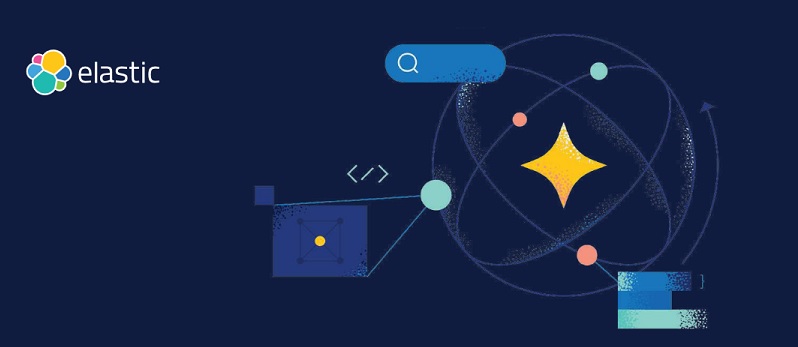

Nearly all (99%) global IT decision makers, regardless of region or industry, recognize generative AI's (GenAI) transformative potential to influence change within their organizations, according to The Elastic Generative AI Report.
However, early adoption continues to be slowed by chaotic data estates, search challenges, and fears around privacy and security, regulation, and internal skills gaps.
Despite these headwinds, the report found most IT decision makers (88%) are eyeing increased investments in GenAI in 2024 and beyond. This points to optimism that these technologies are poised to drive operational efficiencies and productivity, accelerate decision-making, improve customer engagement, and bolster security postures.
"In a little more than 12 months, the disruptive potential of GenAI has shifted from reverie to reality, capturing the imaginations and budgets of IT and data leaders," said Matt Riley, GVP & GM of Search at Elastic. "While data may fuel this technology, search is the engine that powers its effectiveness. Unsurprisingly, businesses that adopt search-powered GenAI quickest — grounded by business context — will lead and uncover the insights needed to securely innovate, build more efficient businesses, and pioneer new customer experiences."
"Generative AI is still an emerging technology, but it already promises to disrupt how organizations operate and engage with customers and employees," said Jason Bloomberg, Managing Director of analyst firm Intellyx. "In particular, GenAI is transforming the data management, security, and search challenges many businesses continue to face. Thoughtful application of this new technology will help them better anticipate customer needs and differentiate themselves from their competition."
Key Concerns
There's high enthusiasm for GenAI across regions and industries, but key concerns stifle operationalization strategies.
Across verticals, GenAI is poised to deliver tangible benefits for organizations. More than half of respondents (57%) anticipate it will improve resource (i.e., staff time, better costs) and operational efficiency and productivity, improve customer experience (50%), and lead to more accurate decision-making (48%).
However, despite early interest and planned investment, internal and external roadblocks threaten to slow GenAI adoption. Nearly 9 of 10 organizations anticipate budgets for GenAI will increase over the next three years, despite nearly all respondents reporting adoption is being slowed, primarily by fears around the security and privacy of the technologies (40%), regulation issues (37%), and the skills gap to implement the technologies in house (36%)
While a skills gap may continue to slow GenAI adoption, 4 of 10 respondents believe it will eventually help upskill and educate employees
Siloed Data Ecosystems
Siloed data ecosystems continue to expand in size and complexity, complicating security, visibility, and real-time analysi.
Most organizations continue to struggle to get relevant insights from their data, which leads to sluggish decision-making. Unsurprisingly, 3 of 4 (75%) respondents report the ability to view data across their entire environment is a key challenge for their organizations, while 7 of 10 (68%) report critical decisions are stalled by slow analysis of their organization's data.
While search powered GenAI is recognized as a key to unlocking transformative insights, effective search capabilities remain stunted. Nearly all respondents (97%) believe a conversational search experience would make their organizations more productive, and nearly half (44%) believe their organizations could save an average of two days or more per week per employee.
The majority of organizations (94%) face data search challenges driven by a struggle to use search results effectively (45%), the inability to cover multiple sources of information (44%), and the inability to obtain responses quickly enough (42%).
Security and Observability
Despite evolving IT infrastructures and data estates, there's optimism GenAI will illuminate security and observability blindspots.
IT security environments and threat landscapes have never been more complex, but there's confidence GenAI will alleviate many challenges. Nearly all organizations (97%) face IT security challenges, from the ability to detect and respond to threats quickly to maintaining current and relevant security practices, but nearly all respondents anticipate GenAI will bolster security postures, such as improving automated threat detection systems (53%), generating training exercises (50%), and automating responses to common security problems (49%).
Holistic observability remains a significant operational pain point, but GenAI offers hope. Nearly all organizations (95%) report observability challenges, from data silos to more complex applications, but nearly all respondents are confident GenAI would benefit their observability postures, specifically to enhance missing data handling (48%), improve data masking and privacy (43%), and to conduct rigorous and regular data quality assessments with synthetic data (43%).
Methodology: The report was produced in conjunction with independent market research specialist Vanson Bourne, and solicited 3,200 IT decision makers and decision influencers across the US, Europe, and Asia-Pacific from more than a dozen sectors, including telecommunications, public service, retail, and financial services.

